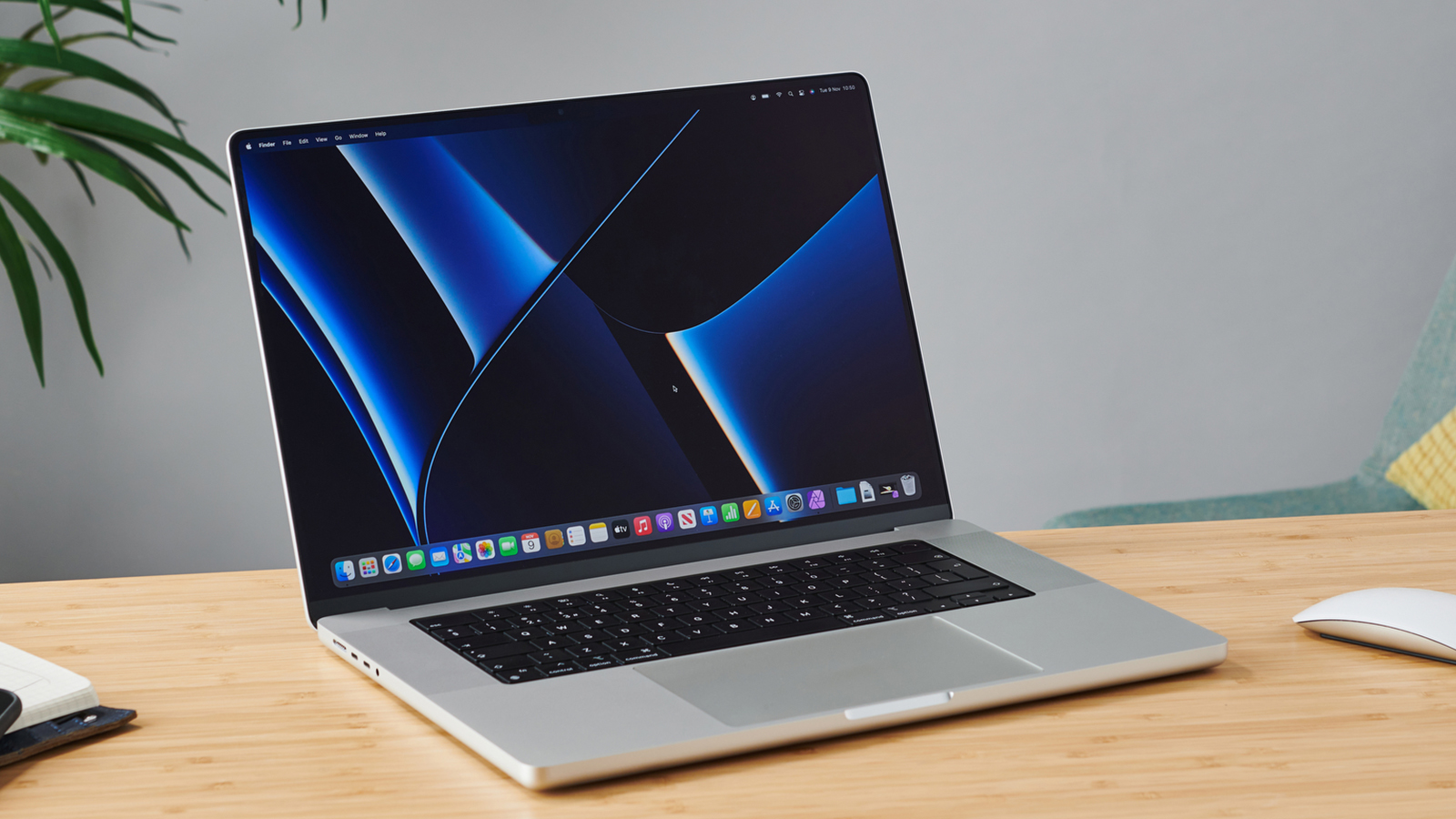MacBook Pro 14-inch (M2, 2023) vs MacBook Pro 14-inch (M1, 2021) - which model is best for you?

The Apple MacBook Pro 14-inch is one of the most popular mobile workstations for creative professionals out there thanks to its powerful new Apple M-series processors, and the new M2 Pro and M2 Max chips are sure to get Apple fans excited.
But the MacBook Pro 14-inch (2021), powered by the M1 Pro and M1 Max chips, is still a very powerful laptop across the board. And, now with the release of the latest models, you can expect to see some healthy price cuts to the 2021 MacBook Pro 14-inch, even though it is arguably the second-best laptop for professionals that Apple has ever produced (its 2023 successor taking the top spot).
As such, a lot of buyers who might have been looking to get a new MacBook Pro 14-inch in the last year and a half might be tempted to see if the 2021 MacBook Pro models are still a good bet in 2023, or if it makes more sense to simply save up for the new models even though they are likely to be more expensive.
Fortunately, we put both MacBook Pro 14-inch models from 2021 and 2023 to the test with the most powerful M1 Max and M2 Max chips available to help you figure out which MacBook Pro model is right for your needs and budget.
MacBook Pro 14-inch (2021) vs MacBook Pro 14-inch (2023): Price

As of now, you can no longer find the 2021 MacBook Pro 14-inch on Apple's website, as it has been replaced by the 2023 model, but at other major retailers like Amazon there is still stock. Some of these listings have already seen their prices slashed, sometimes by as much as $500 on some higher-end configurations.
Meanwhile, the 2023 model isn't likely to get any discounts anytime soon, with the M2 Pro MacBook Pro 14-inch starting at $1,999 / £2,149 / AU$3,199, while the M2 Max version starts at $3,099 / £3,349 / AU$4,999. These are the same MSRP as the 2021 models saw in the US, though the 2023 model is slightly more expensive in the UK and Australia than it was in 2021.
Ultimately, the 2021 MacBook Pro 14-inch will be cheaper than the latest 2023 version, but it might not be that much cheaper, at least not enough to offset the increased performance of the newer model.
Sign up for breaking news, reviews, opinion, top tech deals, and more.
In both cases, it's worth seeing what Apple promo codes are available at the moment which could help cut down costs.
- Winner: Tie
MacBook Pro 14-inch (2021) vs MacBook Pro 14-inch (2023): Design

In terms of design, the MacBook Pro 14-inch is completely unchanged from 2021 to 2023, so there's very little to compare on this front. Both have the same number and type of ports, as well as the same color options and the same display and keyboard.
Where there is a difference, it's in the 2023 MacBook Pro 14-inch's internal specs. The M2 Pro and M2 Max chips have more CPU cores than the M1 Pro and M1 Max chips, as well as a larger number of GPU cores.
The 2023 MacBook Pro with M2 Max has the option of increasing the system memory all the way up to 96GB, while the M1 Max MacBook Pro 14-inch maxes out at 64GB. The new 2023 model also includes Wifi 6E and Bluetooth 5.3 support, as opposed to Wifi 6 and Bluetooth 5.0 for the 2021 model.
Other than that, there isn't much else to distinguish the two model years apart from one another, especially if you're looking at them side by side.
- Winner: Tie
MacBook Pro 14-inch (2021) vs MacBook Pro 14-inch (2023): Performance

| Component | 2021 (M1 Max) | 2023 (M2 Max) |
|---|---|---|
| CPU | 10 cores | 12 cores |
| GPU | 32 cores | 38 cores |
| Memory | 64GB | 64GB |
| Storage | 4TB | 2TB |
Ultimately, performance is where the two MacBook Pro 14-inch models diverge, and in our testing, the 2023 MacBook Pro 14-inch pulls away from the 2021 model definitively.
The M2 Max chip manages to outperform the M1 Max chip by a healthy amount in our Geekbench benchmarks, with the additional two performance cores really making a difference in multi-core performance. There was also a major improvement in CPU rendering in our Blender benchmark tests as well.
| Test | M1 Max (2021) | M2 Max (2023) | Performance Increase |
|---|---|---|---|
| Single Core CPU | 1,696 | 1,926 | 13.58% |
| Multi Core CPU | 11,477 | 14,939 | 30.17% |
| Average gain | - | - | 21.88% |
| Test | M1 Max (2021) | M2 Max (2023) | Performance Increase |
|---|---|---|---|
| Monster | 99.81 | 126.7 | 26.94% |
| Junkshop | 56.97 | 72.61 | 27.45% |
| Classroom | 43.76 | 56.64 | 29.43% |
| Average gain | - | - | 27.94% |
In terms of GPU performance, the additional GPU cores in the M2 Max definitely make a difference, though probably not as big of a leap as Apple would have hoped since TSMC's 3nm process node — which many expected for the M2 Pro and M2 Max — wasn't able to move into mass production until December 2022. This means that the M2 Pro and M2 Max chips still use a 5nm process, so there isn't much to be gained there over the 5nm M1 Pro and M1 Max.
Still, Apple was able to squeeze out some noticeably improved performance on the GPU side of the SoC in line with some of the claims that it made during the M2 Pro and M2 Max announcement.
| Test | M1 Max (2021) | M2 Max (2023) | Performance Increase |
|---|---|---|---|
| Wild Life | Maxed Out | Maxed Out | N/A |
| Wild Life Unlimited | 46,039 | 89,902 | 95.27% |
| Wild Life Extreme | 13,120 | 13,383 | 2.00% |
| Wild Life Extreme Unlimited | 16,633 | 21,420 | 28.78% |
| Performance Average | - | - | 42.02% |
| Test | M1 Max (2021) | M2 Max (2023) | Performance Increase |
|---|---|---|---|
| Wild Life | 90.7 | 96.4 | 6.28% |
| Wild Life Unlimited | 275.7 | 538 | 95.15% |
| Wild Life Extreme | 78.6 | 80.1 | 1.91% |
| Wild Life Extreme Unlimited | 99.6 | 128.3 | 28.82% |
| Performance Average | - | - | 33.04% |
Apple's bread and butter is creative workloads though, with a specialized media engine built into its SoCs to speed up video encoding and decoding, as well as 3D rendering work. There wasn't too much of a difference between the two model years in terms of Adobe Premiere performance, but there was a substantial improvement in Handbrake encoding speed and Adobe Photoshop performance.
| Test | M1 Max (2021) | M2 Max (2023) | Performance Increase |
|---|---|---|---|
| Frames per second | 56.51 | 71.6 | 26.70% |
| Workload duration | 05:12 | 04:06 | 21.15% |
| Performance Average | - | - | 23.93% |
| Test | M1 Max (2021) | M2 Max (2023) | Performance Increase |
|---|---|---|---|
| Photoshop | 981 | 1,199 | 22.22% |
| Premiere Pro | 1,000 | 1,009 | 0.9% |
| Performance Average | - | - | 11.56% |
With the release of Resident Evil Village as a native Mac title in late 2022, there has been renewed interest in Mac gaming, especially with the upcoming release of No Man's Sky as a native Mac title as well. There aren't a whole lot of Mac games with built-in benchmarks, unfortunately, but Shadow of the Tomb Raider has been a mainstay of PC gaming benchmarks for a few years now, and it shows a modest improvement for the M2 Max over the M1 Max in gaming performance.
| Test | M1 Max (2021) | M2 Max (2023) | Performance Increase |
|---|---|---|---|
| 1200p, Lowest settings | 69 | 73 | 5.96% |
| 1964p, Highest settings | 31 | 34 | 9.45% |
| Performance Average | - | - | 7.71% |
Finally, there is the matter of battery life. One of the biggest advances in the MacBook lineup after the move to Apple's own in-house silicon is in energy efficiency thanks to the M-series chips big.LITTLE architecture developed by British semiconductor company Arm. We've seen huge gains in battery life for the MacBook Air and MacBook Pro, but the M1 Max and M2 Max are seriously robust SoCs that are meant to perform some very energy-intensive workloads, so you'd think that they would be serious power hogs.
They aren't quite as energy-sipping as the more mainstream MacBook Air, but they still manage to get some decent battery life overall, with the 2023 MacBook Pro 14-inch slipping quite a bit in our scripted web browsing battery benchmark.
| Test | M1 Max (2021) | M2 Max (2023) | Performance Increase |
|---|---|---|---|
| Scripted Web Browsing | 15:32 | 12:51 | -22.66% |
Overall, the claims that Apple made in its MacBook Pro 14-inch (2023) announcement about the performance increase for the new model over its predecessor look to be more or less on track, other than its battery life.
In terms of CPU performance, the MacBook Pro 14-inch 2023 is about 22% faster than the 2021 model, while the 2023 model's GPU performance is about 37% faster. The 2023 MacBook Pro 14-inch has about 17.75% better creative workload performance, with its gaming performance making a more modest 7.7% gain.
| Test | Performance Increase | ||
|---|---|---|---|
| CPU | 25.52% | ||
| GPU | 36.89% | ||
| Creative | 17.74% | ||
| Gaming | 7.70% | ||
| Battery | -22.66% |
- Winner: MacBook Pro 14-inch (2023)
Which one should you buy?

If you're in the market for a new MacBook Pro 14-inch and you're not sure which year is the best MacBook Pro for you, it will probably come down to two major considerations: performance or price.
If you want the best performance possible, then the decision is fairly clear. The MacBook Pro 14-inch (2023) outperforms the 2021 model by a fairly substantial margin, especially in professional workloads. Its battery life takes a step back, but it's still nearly 13 hours, which is fantastic for a professional workstation.
The new MacBook Pro 14-inch will be selling for full price for a long while though, and there are going to be a lot of retailers looking to offload some excess inventory of the 2021 model to make room for the latest release, so it's likely that you'll be able to get some decent discounts online, and if you can get a great deal, then the 2021 MacBook Pro is still an incredible device.
Just don't sell yourself — and your new MacBook Pro — short: unless the 2021 model's price is cut by about 20% or more, you're still going to get far more bang for your buck if you go with the latest model, and those kinds of discounts are generally going to be rare on a MacBook Pro. Unless you have a very hard limit on how much you can afford to spend on a new MacBook, chances are that the new 2023 model is going to be the one you'll want to get, even at full price.

John (He/Him) is the Components Editor here at TechRadar and he is also a programmer, gamer, activist, and Brooklyn College alum currently living in Brooklyn, NY.
Named by the CTA as a CES 2020 Media Trailblazer for his science and technology reporting, John specializes in all areas of computer science, including industry news, hardware reviews, PC gaming, as well as general science writing and the social impact of the tech industry.
You can find him online on Bluesky @johnloeffler.bsky.social